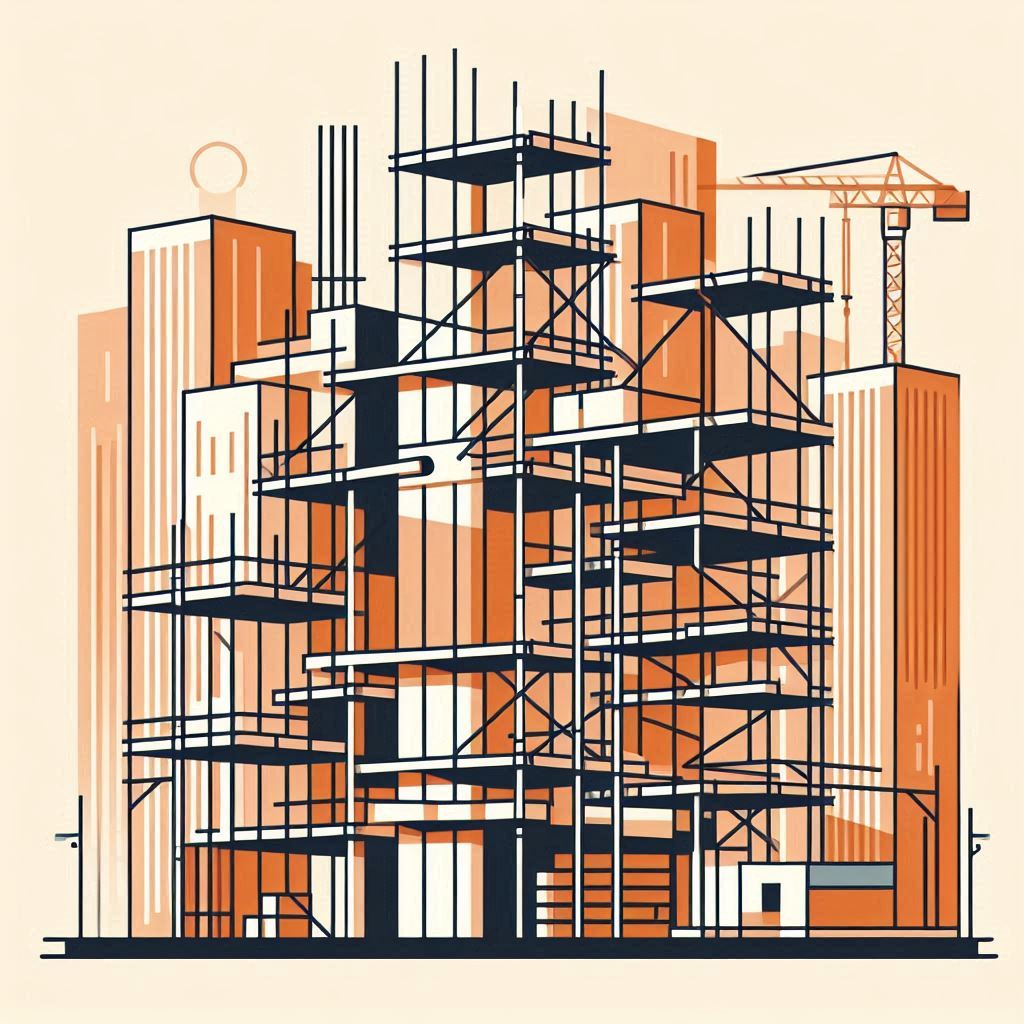
This research proposes an AI-powered system using deep learning and computer vision to automatically detect incomplete scaffolding in construction sites, enhancing safety by preventing structural failures and worker accidents.
Construction sites are some of the most hazardous workplaces, with falling accidents accounting for nearly half of construction-related deaths. A major culprit? Incomplete scaffolding structures. Workers often remove cross braces—the crucial diagonal bars that stabilize scaffolding—for convenience and forget to reinstall them, leaving unsafe gaps. Traditional manual inspections are time-consuming, labor-intensive, and prone to human error. But what if artificial intelligence (AI) could help solve this problem? 🤔
A recent study from researchers at National Taiwan University proposes a deep learning-based solution that uses computer vision to automatically detect scaffolding completeness. This innovative approach could revolutionize construction safety monitoring! 🚀
The research team developed a real-time monitoring system leveraging Mask R-CNN (Region-based Convolutional Neural Network) and Hough Transform, two advanced computer vision techniques. Their system aims to:
✅ Identify scaffolding structures in construction site images 📸
✅ Detect whether cross braces are present or missing ❌
✅ Provide automated alerts to improve safety 👷♂️
By training a convolutional neural network (CNN) with a dataset of scaffold images, the system learns to recognize correct and incorrect scaffolding setups. This allows it to quickly and accurately assess scaffolding safety without requiring manual inspection.
The proposed system follows three main steps:
Images of construction scaffolding are taken from different angles. These images are then preprocessed to enhance their features, making it easier for AI to detect patterns.
Mask R-CNN, a powerful deep learning algorithm, is used to detect and segment scaffolding components in the images. The model identifies the vertical and horizontal bars, as well as the essential cross braces.
Since cross braces form an ‘X’ shape, the Hough Transform is applied to detect straight lines and confirm their presence. If the expected cross braces are missing, the system flags the scaffolding as incomplete.
🚨 Automated Alerts: If missing braces are detected, an alert is sent to site managers, enabling real-time intervention to prevent potential accidents.
🔹 Increased Safety: Automating scaffold inspections can help prevent accidents and save lives.
🔹 Time & Cost Savings: AI-driven detection eliminates the need for manual inspections, reducing labor costs and delays.
🔹 Real-Time Monitoring: The system works continuously, providing instant safety alerts instead of waiting for scheduled inspections.
🔹 Non-Intrusive Solution: Unlike manual inspections that require physical checks, this system uses cameras and AI to assess safety remotely.
While this AI-based approach is a game-changer, some challenges remain:
❗ Complex Environments: Construction sites have varying lighting, angles, and obstructions that can make detection harder.
❗ Generalization Across Projects: Different scaffolding designs may require additional training for the AI model.
❗ Integration with Construction Workflows: Companies need to incorporate AI-driven inspections into their standard safety procedures.
Looking ahead, researchers and engineers can refine the system by:
✅ Improving AI training with larger, more diverse datasets 📊
✅ Combining AI detection with drone-based surveillance for broader coverage 🚁
✅ Integrating with Internet of Things (IoT) sensors to enhance accuracy 🌐
✅ Developing wearable safety devices that alert workers in real time 📳
Construction safety is an urgent issue, and AI-powered scaffold monitoring is a promising step toward reducing workplace hazards. By leveraging deep learning and computer vision, the research team has demonstrated how technology can automate inspections, improve safety, and save lives. As AI continues to evolve, construction sites could become smarter, safer, and more efficient than ever before! 🏗️💡
🔹 Scaffolding – A temporary metal or wooden structure used in construction to support workers and materials at height. 🏗️
🔹 Cross Braces – Diagonal bars that provide stability to scaffolding by preventing it from swaying or collapsing. 🔧
🔹 Deep Learning – A type of artificial intelligence (AI) that mimics how the human brain learns, helping machines recognize patterns in images, speech, and data. 🧠🤖 - More about this concept in the article "Forecasting Vegetation Health in the Yangtze River Basin with Deep Learning 🌳".
🔹 Computer Vision – A field of AI that enables computers to interpret and analyze visual information from images or videos, just like humans do. 📸👀 - More about this concept in the article "Revolutionizing Traffic Monitoring: Using Drones and AI to Map Vehicle Paths from the Sky 🚗🚁".
🔹 Mask R-CNN – A deep learning algorithm that detects and segments objects in images, helping AI “see” individual components like scaffolding parts. 🖥️ - More about this concept in the article "Hands-Free Diagnostics: Revolutionizing Ultrasound Imaging with AI and Voice Commands 👶❤️🤖".
🔹 Hough Transform – A mathematical technique used in image processing to detect straight lines, like the bars in scaffolding structures. 📏
Source: Pei-Hsin Lin, Jacob J. Lin, Shang-Hsien Hsieh. Construction Site Scaffolding Completeness Detection Based on Mask R-CNN and Hough Transform. https://doi.org/10.48550/arXiv.2503.14716
From: National Taiwan University.